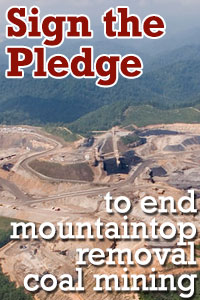 What's My Connection to Mountaintop Removal?
What's My Connection to Mountaintop Removal?
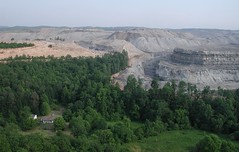 The Price of Your Power: Communities Devastated by Mountaintop Removal
The Price of Your Power: Communities Devastated by Mountaintop Removal
The stories of mountains and communities featured on this site are taken from the National Memorial for the Mountains - also hosted on iLoveMountains.org. Please take a moment to learn more about these communities on the other side of your lightswitch, and learn how you can help stop the destruction of Appalachia.
Click on a marker to see photos and read stories from each of these 22 Appalachian mountains and communities or read excerpts from each community from the list below.
 Kayford Mountain, West Virginia"Mountaintop mining is practically raising the dead, while burying the living." In 1986, mountaintop removal operations began near Larry Gibson's home. Over the next 20 years, "the slow motion destruction of Kayford Mountain has been continuous - 24 hours a day, seven days a week." Coal companies have flattened more than 12,000 acres of mountain landscape around his home. Where he once looked up at the peaks of Kayford from his family graveyard, he now looks 300 feet straight down at a blasted and devastated landscape. Learn more about this community | Learn how you can help | Sign the guestbook |
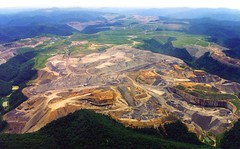 Blair Mountain, West Virginia"Our philosophy is not to impact people." -David Todd, spokesperson for Arch Coal. Enacting this plan to turn an entire community's home place into an industrial mine with "no people to impact," a coal company bought more than half of the homes in Blair, forcing every resident who sold to sign an agreement saying that they would never protest strip mining again, and that they would never move back to any area near the mines. "If there are no people to impact, that is consistent with our philosophy." Learn more about this community | Learn how you can help | Sign the guestbook |
 Fork Ridge, Virginia"Our children don't have a choice when they have to breathe coal dust at their schools." Citizens of the coal camps have lived in fear of the blasting that has bombarded our homes with fly rock, flooding, dust and noise. Open silos and thousands of tons of stockpile coal are dumped in different places in our communities, causing a big problem with coal dust. There is an open silo and haul road within about 1000 feet of Appalachia Elementary School. In the past, I have passed the playground at the school and you could barely see the children for all of the dust. Learn more about this community | Learn how you can help | Sign the guestbook |
 McRoberts, Kentucky"I figure in 10 years this will be a ghost town." "It's nerve-wracking; you can't sleep at night like you used to. You can't enjoy yourself. The coal trucks will run you off the road - they run 24 hours a day. The noise will kill you; the dust will kill you. You can't keep your house clean because of the dust. They'll come right down to your back door if you don't stop them. They will really hurt you. This place will never be like it used to be." Learn more about this community | Learn how you can help | Sign the guestbook |
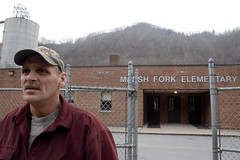 Sundial, West VirginiaAn ill-constructed sludge dam threatens the lives of 230 children each school day. Marsh Fork Elementary School is located directly below the 2.8 billion gallon (yes, with a B) Shumate sludge impoundment, secured by a 385-foot tall earthen dam. This dam is leaking. Should the earthen dam of the Shumate impoundment ever be breached, there would be less than three minutes to evacuate the Marsh Fork Elementary School before the water at the school was 6 feet deep, and in only minutes more it would rise to over 15 feet. Learn more about this community | Learn how you can help | Sign the guestbook |
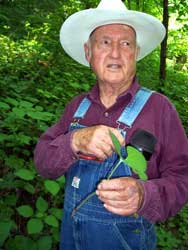 Huckleberry Ridge, Kentucky"We are going to be the endangered species." The mountaintops surrounding Daymon Morgan's land are bleeding. More precisely, they are being blown apart with explosives. Mining companies are blasting the tops off the mountains, pursuing a technique that makes it easier, faster, and cheaper to remove coal from the earth that holds it. It's an efficient technique: Explode the mountain; remove the coal; shove the waste over the nearest hillside; "reclaim" the site; move on to the next site. Learn more about this community | Learn how you can help | Sign the guestbook |
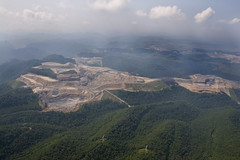 Buffalo Mountain, West VirginiaBuffalo Creek: No two words carry more drama and pain in the coalfields. On February 26, 1972, a dam constructed of coal waste broke loose near the head of Buffalo Creek. The poorly constructed dam was holding back a lake of water used for cleaning coal. The lake was perched between two hills. Hundreds of thousands of gallons of toxic, black water rushed down the valley like a tidal wave. The death toll totaled 125. Hundreds of homes were swept away. Learn more about this community | Learn how you can help | Sign the guestbook |
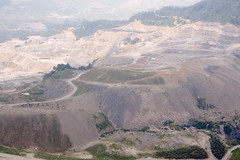 Black Mountain, VirginiaThis accident cost too much to go unnoticed. Jeremy, Dennis and Cindy Davidson's youngest son, was asleep in his room when a half-ton boulder plummeted through his bedroom wall. The dislodged boulder, which had fallen 649 feet, flattened a path across the bed where Jeremy lay. In an instant, the boulder killed young Jeremy's future and crushed his parents' and many Virginians' hearts. Jeremy was three-years-old. Learn more about this community | Learn how you can help | Sign the guestbook |
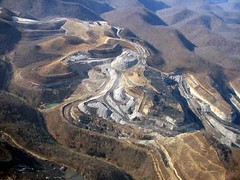 Bob White, West Virginia"No child - or adult, for that matter - should have to endure this constant hell." Maria's family home place was once a lush green paradise of fruit trees, vegetable gardens and a mountain stream. The forests were full of wildlife, medicinal plants, and wild berries. Now this treasure has been passed down to her children as a pile of rubble, poisoned streams and wells, and air that is thick with blasting fumes and dust. "My children will never know the beauty, culture or heritage that the generations before them intended on passing on to them." Learn more about this community | Learn how you can help | Sign the guestbook |
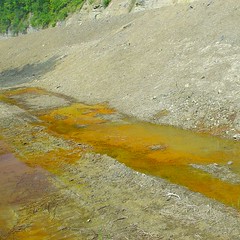 Zeb Mountain, Tennessee"It just killed me that my home place was getting ready to be torn up like that." Zeb Mountain has sustained rural communities for generations. The mountain is now home to the largest cross-ridge mining operation in Tennessee. In this new form of mountaintop removal, the company will attempt to put Humpty Dumpty back together again. When mining is finished, they will try to pile the rock back up in the shape of the former mountaintop. In the meantime, the rock will be stored on adjacent abandoned strip mines. Learn more about this community | Learn how you can help | Sign the guestbook |
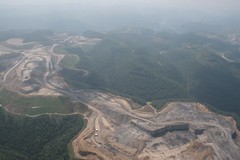 Rawl, West Virginia"The water runs out of the pipe like tomato soup: thick with orange sediment." In 2005, scientists at Wheeling Jesuit University released a study indicating that water tested in private wells in Rawl, West Virginia exceeded federal drinking water standards for arsenic, lead, iron, aluminum, beryllium, barium, manganese and selenium. Though Massey Energy denied any correlation between nearby mountaintop removal mining operations and the elevated toxin levels, the toxins found in the water are commonly found in coal sludge. Learn more about this community | Learn how you can help | Sign the guestbook |
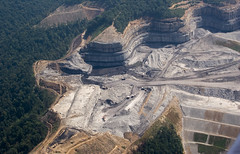 Pickering Knob, West VirginiaResidents have discovered that they are not "most Americans." Riffe Branch and Duncan Fork are not the only two communities forced to fight mountain top removal for water. The water in Holden is not for drinking. Due to acid mine drainage, the water in Holden is orange. "At least one well has gone dry. Others just have bad water. One neighbor has water that smells terrible," said longtime Holden resident, Ralph Preece. "Another family was sick for a year. Once they started drinking bottled water, they got better." Learn more about this community | Learn how you can help | Sign the guestbook |
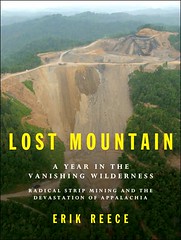 Lost Mountain, KentuckyThe coal industry operates with little conscience or constraint. Over the course of one year, from September 2003 to September 2004, I watched at close range as one mountain was dismantled and destroyed so its coal could be extracted and sold to twenty-two other states and other countries. I visited the mountain at least once a month. I hiked over a hundred miles as I climbed to its summit over and over, then explored its flanks and descended along its headwater streams. Today there is no summit. Learn more about this community | Learn how you can help | Sign the guestbook |
 Island Creek, Kentucky"I fear daily as to what may happen to my home." My father built the house I live in back in 1955 with lumber he sawed himself from a particular type of tree taken from the mountains that surround the home place. He built it solid and with pride, just like his dad before him. We had good well water, beautiful mountains, clear streams and clean air. It was a place he was proud of and he took comfort in knowing his family would always have a place to call their own. Today, the beautiful mountains have been destroyed by mountaintop removal mining. Learn more about this community | Learn how you can help | Sign the guestbook |
 Sylvester, West Virginia"For the past 8 years, life has been a living Hell." In 1998, a coal processing plant was built in the community, despite the fact that 75% of residents signed a petition opposing the permit for the facility. A mountaintop removal operation that removed a nearby ridge then allowed the coal dust from the plant to blow directly into the community. Now homes are frequently covered inside and out with coal dust, the same coal dust that causes the infamous black lung disease suffered by coal miners. Learn more about this community | Learn how you can help | Sign the guestbook |
 Mud River, West Virginia"We are still in America, aren't we?" The residents had two churches and a ball field. The flat land along the river was dark and fertile. Corn and vegetables grew well on the few acres. Some families had a few horses and cattle pastured on the flat land. No longer. Where there were once some 60 families, only five remained at the beginning of 1998 after Arch Coal Inc.'s Hobet 21 Mine was expanded across the Boone County line into Lincoln County. Learn more about this community | Learn how you can help | Sign the guestbook |
 Kirk, West VirginiaLaurel Creek residents have vowed to stop the new Consol mine. It's hard to say which problem has caused the most concern among the residents of Laurel Creek. Was it the rocks, some more than three-feet high, that sailed off the mine site, the dozens of dead fish in the stream, the silt runoff that filled in one end of Laurel Lake, the half-mile wide coal sludge lake looming over the valley, the well water that turned orange, the loss of access to the mountain land, or the mere sight of their mountains being chopped off? Learn more about this community | Learn how you can help | Sign the guestbook |
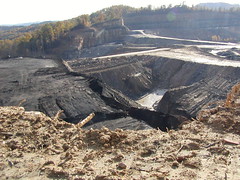 Montgomery Creek, Kentucky"I just don't think that this should be happening in the United States." In order to make sure mining operations stayed off his property, McKinley Sumner had the boundaries surveyed and marked with bright orange markers. When mining began near his property, not only did the markers disappear, but also the big, old tree used to indicate the property line. One lawyer says it would now be hard to prosecute the company for trespassing on his property, because there is no property there any more. It's just a straight drop-off now. Learn more about this community | Learn how you can help | Sign the guestbook |
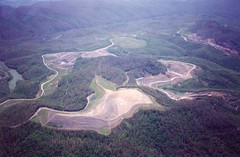 Claiborne County, Tennessee"No one could know all the damage that's been done." Many people must remember when in the early spring of 1955, a sludge pond broke loose and did so much damage. I cannot remember exactly how many homes were lost, but three I remember well. One was a log house that looked like nothing could move it - but that flood did. The mother barely made it to a hill with her children. The older child of another family ran to a hill and watched as his home, his mother, and two little sisters were washed away. Learn more about this community | Learn how you can help | Sign the guestbook |
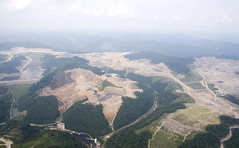 Glen Alum Mountain, West Virginia"They have the audacity to tell me they are within the legal limits." Mary Farley was sound asleep on the couch when a loud blast went off from the mine above her small house. First, the kitchen wall above the sink separated from the ceiling in a 1-inch crack. Next, the floor dropped 6 inches in one corner. "I thought the house was coming down around me," said. The inspector from the Division of Environmental Protection checked the seismograph records at the mine. He reported that the blasts were all within permitted limits. Learn more about this community | Learn how you can help | Sign the guestbook |
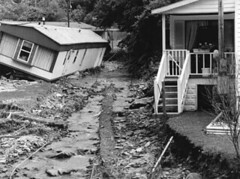 Sarah Ann, West Virginia"They can't build the plant without that land." Mine officials offered most people only about $35,000 for their homes. Some felt they had no alternatives-they didn't want to live by a prep plant. In late October of 1999, a woman in her 70's sat in a living room surrounded by the boxes and bags of her life. It had been her father's house and her only home. She would be leaving soon. But $35,000 wouldn't buy her a house in Logan. She was moving in with her son. Learn more about this community | Learn how you can help | Sign the guestbook |
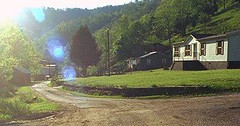 Ragland, West VirginiaPoliticians and public officials fail to help. "What concerns many Ragland residents the most is the slag dam near the top of the mountains. It stretches nearly three football fields across and is twice as long. Since the dam sits nearly a mile off the road and is reachable only on four wheelers and steep roads, those just passing through wouldn't know it exists. But for the Ragland residents, it lies above the community, a dark watery reminder of the tragedy at Buffalo Creek." Learn more about this community | Learn how you can help | Sign the guestbook |





